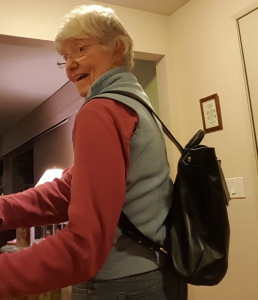
Heal Back Pain
I struck gold when mining my magazine and journal basket in the bathroom recently. In a 2011 issue (January) of Seattle Woman Magazine, Nancy Shatz Aton gives us 10 ways to heal back pain. This excellent list comes from her book, The Healthy Back Book: A Guide to Whole Healing for Outdoor Enthusiasts and Other Active People. It’s a book on my wish list, for sure. Here are her 10 suggestions with my comments. Put this away somewhere handy for when you need it, or put the suggestions to use right now.
Most Americans suffer back pain at least once during their life time and some of us develop chronic lower back pain conditions that give us grief on a regular basis. That would include me. I am so happy I saved and now found Nancy Alton’s tips for managing this pain.
- Take charge of your healing. Although working with a knowledgeable practitioner who discusses every aspect of an injury can be helpful, it is important to realize you are in charge of your own healing. Whether you experience back pain daily or only a few times a year, living with it is about self-management. This is the premise of my GrandmaBetsyBell blog: self-care. Picture the various types of therapies available to you as spokes of a wheel. Imagine yourself as standing on the hub of that wheel. You can select any combination of therapies, or spokes, from that big wheel.
- Tune into the mind-body connection. I find it interesting that this is her #2. Becoming self-aware is key. Pain has a physical component, but it also derives from our emotions. We tell ourselves a “story” about why we have low-back pain. We sometimes ignore the emotional side of the tale, But thinking that way overlooks the powerful role emotions play in the story of pain. Both the rational explanation and the emotional component are part of the mind-body connection; that is, how our minds and the emotions, thoughts and feelings emanating from them affect our bodies. “Like all experiences, pain is influenced by everything that is going on in a person’s life at the time, and probably everything that has gone on in the past,” says Dr. J. David Sinclair, a pain-management specialist in Seattle.
- Move often. Keep Moving! It is ideal to exercise your body every day. Of course, after a back injury you’ll need your doctor’s OK before you begin exercising. Resume normal activities and movement patterns as soon as possible; moving your body leads to healing. A 1996 health campaign in Australia erected billboards and produced radio and television spots with messages such as, “Does your back hurt? Get up and take a walk.” And “Back pain—don’t take it lying down.” The campaign conveyed the message that engaging in the daily activities of life is often the best treatment for back pain. During and directly after the campaign, the rate of medical payments for back claims fell more than 25 percent!
- Find a good rehabilitation specialist. When your back goes out, often the first person you call is your primary care doctor. Next time, you might want to try booking an appointment with a physiatrist (fi-see-a-trist) as well. My primary doc. sent me to Dr. Ren, a physiatrist, or Sports medicine doctor. Way more useful than a referral to the orthopedist. Dr. Ren urged me to walk 30 minutes every day, with hiking sticks, if necessary. No sitting down because of the pain from sciatica. Keep walking. She offered me hard drugs, but so far I’ve been able to get by with the Shaklee Pain Relief. She encouraged me to change from Aleve to Tylenol which I think will be good for my stomach. More than 3 Aleve a day made me sick to my stomach.
A physiatrist is a specialist in treating illnesses and injuries that affect how people move their bodies, and ae especially well qualified to deal with back injuries. Physiatrist believe in educating patients about their conditions and helping people understand that movement is an important tool for easing low-back pain.
- Try out different bodywork treatments. Hands-on therapies can be incredibly healing. Adding one or more of these complementary practices to your medical care might promote healing, ease pain and contribute to a sense of wholeness. More than 80 types of therapies fall within the category of massage, from Swedish massage to RuiNa. It’s worth finding a well-recommended practitioner and looking into unfamiliar bodywork therapies. Your road to healing may begin with an appointment with a bodywork practitioner. Have you thought about trying Bowenwork, Rolfing, Heller work structural integration, hypnotherapy, chiropractic care, osteopathy or acupuncture?
- Strengthen Muscles. Back injuries often stem from muscular imbalances. This is why practicing yoga or Pilates can be so beneficial for both easing back pain and preventing future back pain episodes. Both yoga and Pilates help develop a person’s core strength, which includes the abdominal, pelvic floor, buttocks, hip and lower back muscles. During class, you strengthen these muscles, build muscular endurance and learn how to initiate movement from the core area. The way you move on the mat will begin to carry over into your daily life, which can correct poor postural traits and eliminate the corresponding low-back pain. Two other movement therapy practices that have proven successful in easing and healing low-back pain are the Feldenkrais Method and the Alexander Technique. I have posted my recommendations and experience with Myo fascial release therapy, Feldenkrais and Pilates for low back pain.
The caveat here is you will be paying for these therapies out of pocket in almost all health insurance plans and it is expensive. I just began a 4 week course with a therapeutic yoga specialist and see results already. Four weeks cost $150. Every Myo facial release session with Cedron Sterling costs $160 for 90 minutes. His work has made a huge difference and certainly worth the expense. Most of us cannot afford these wonderful therapies that keep us out of the orthopedist’s surgery theater.
- Mediate. Practicing meditation can help bring relief to back pain. Mindfulness meditation had numerous benefits for the chronic back pain sufferers who took part in an eight-week study reported in Pain in 2008. These patients experienced less pain, improved physical function, pain acceptance and better sleep. Meditation can be any activity that elicits the relaxation response in a person, which simply means your body calms down, lowering metabolism, blood pressure, heart and breathing rates. Forms of meditation include the relaxation response, transcendental meditation, mindfulness meditation, tai chi, repetitive prayer and walking meditation. Practicing any movement therapy that has you focus on your breathing while moving your body with intention can be a meditative experience.
- Watch what you eat. Inflammation often causes pain and swelling. You can modulate your body’s inflammatory response system through diet. Through simple changes, you can decrease your likelihood of generating an overly high inflammatory response during a back pain episode. To decrease inflammation in your body, include the following foods in your diet: cold-water fish, fruits and vegetables, whole grains and high fiber foods and water. The following food can increase inflammation, so minimize these food types in your meal plan: red meat and high-fat dairy products, sugar white food, flavored drink and highly processed foods.
I have posted an extensive commentary on foods that reduce inflammation. The best of these posts is here.
- If it involves a disk, be patient. Disk herniations heal without surgery more than 85% of the time and several studies have shown that after two years, people who have had surgery and people who have not had surgery recovered at equivalent rates. If you feel your back pain stems from a herniated disk or disks, try all avenues of noon-operative care. “Probably upwards of 40 percent of people who eventually get surgery aren’t happy with it in the end,” says family physician Sarah J. D’Heilly, MD.
My original injury involved a herniation at L5. It is much less protruded now and had pretty much healed, although that is the place here the sciatica pain originates.
- Keep trying. Sometimes a doctor or a practice might not be the right fit for your low-back problem. If you try a therapy or new practitioner and don’t find any relief or see any progress after a handful of sessions, it might be time to move on. This can be discouraging. Still, it is worthwhile to try new paths to healing, whether that means trying a different bodywork technique or Pilates or talking to your back specialist about other options. It is also helpful to think about the term healing, which isn’t defined by a cure. There isn’t always a cure for low-back pain, but you can begin to see yourself as a whole person with low-back pain. Healing might mean learning self-care methods to alleviate your pain, practicing yoga a few times a week, seeing your doctor as needed and living your daily life a fully as possible.
My new normal is never leaving the house to walk anywhere without my hiking sticks. Sometimes I don’t need them. But it lowers my anxiety and allows me to keep walking when I have them with me. I recently bought a new purse that holds the folded sticks. I can look relatively sheik going to the opera with this purse, don’t you think?
Be well, Do well and Keep moving.
Betsy

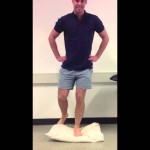
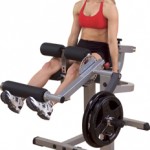
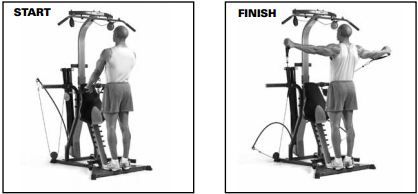

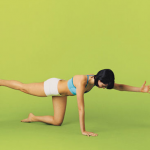
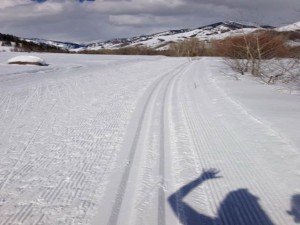
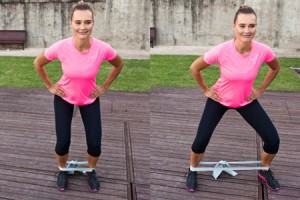
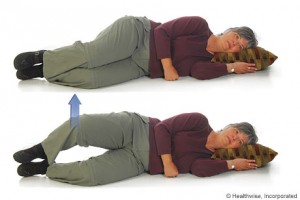
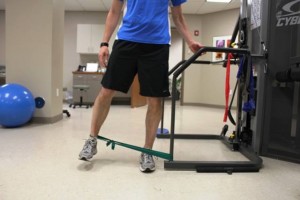



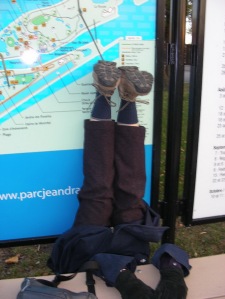


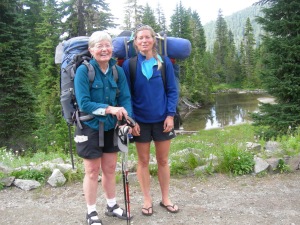
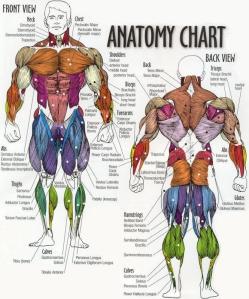
 looked at my Magnetic Resonance Imaging—MRI, he declared my bones to be poor candidates for surgery. They already looked worn out at age 53.
looked at my Magnetic Resonance Imaging—MRI, he declared my bones to be poor candidates for surgery. They already looked worn out at age 53.